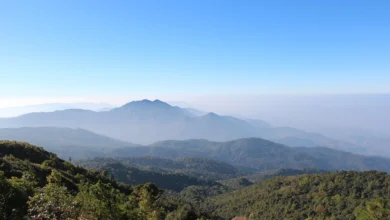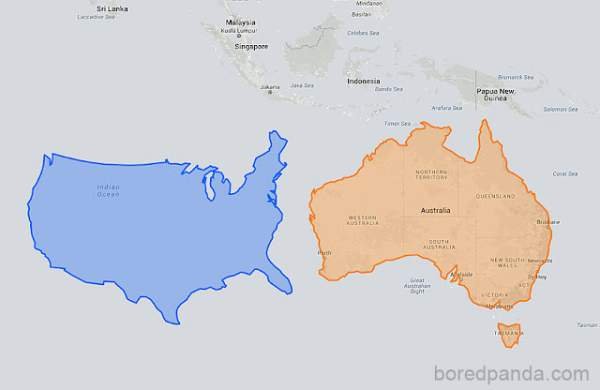
The way we perceive the size of countries and continents has been shaped largely by one specific map: the Mercator Projection. While useful for navigation, this method distorts the true size of landmasses the farther they are from the equator. As a result, we tend to overestimate the size of regions like Greenland and Antarctica, and underestimate others like Africa or Australia.
The Mercator Projection was developed in 1569 by Gerardus Mercator, a Flemish geographer, to help sailors navigate the seas. While the map was revolutionary for sea travel, it created a skewed perception of landmass sizes. Since the world is a three-dimensional sphere, flattening it into a two-dimensional map leads to distortions. This means that countries closer to the poles, such as Russia and Canada, appear far larger than they are in reality, while those near the equator, like countries in Africa or South America, appear much smaller.
A fascinating way to see the actual sizes of countries is through the website thetruesize.com, which lets you drag and drop countries to different locations on the map. Bored Panda used this tool to reveal just how different the world looks when we correct for these distortions. The results are eye-opening and challenge the way we’ve always viewed global geography.
1. The U.S. vs. Australia

When you move the United States next to Australia, you realize how much smaller the U.S. is in comparison. Despite the U.S. being a vast country, Australia, when placed nearby, appears overwhelmingly large, covering almost the same land area as the U.S.
2. Russia on the Equator
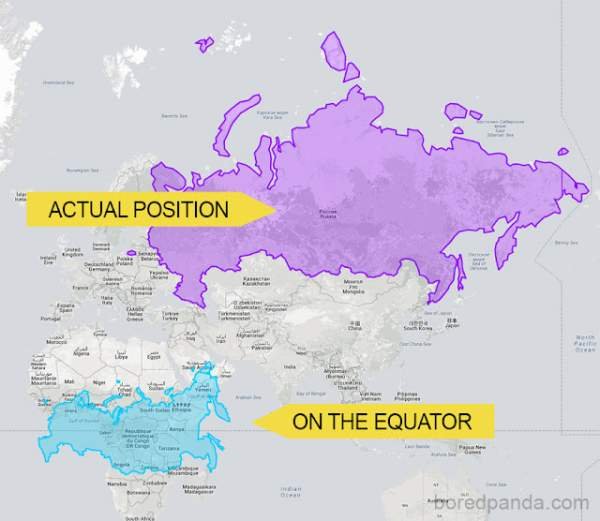
Russia is famously the largest country in the world, but when moved closer to the equator, it shrinks dramatically. This transformation shows just how much the Mercator Projection distorts the size of countries at higher latitudes.
3. Romania as an Arctic Island
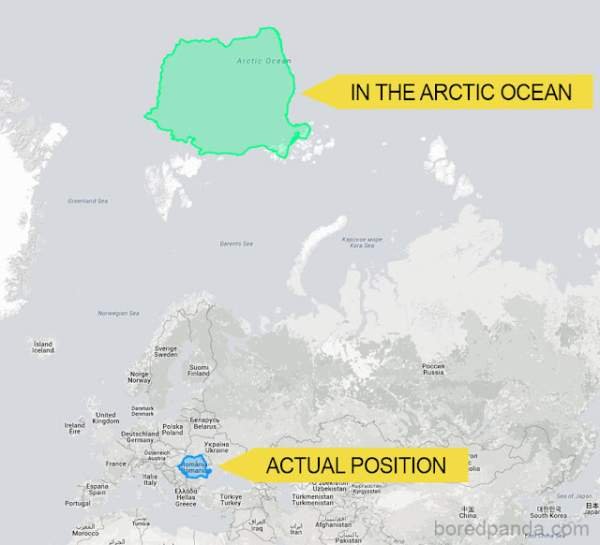
When Romania is relocated to the Arctic Ocean, it appears isolated and much smaller than you’d expect. It’s a visual reminder of how location affects our perception of size.
4. Australia vs. Europe

Australia is larger than most people realize. If you move it over Europe, it nearly covers the entire continent, showing just how vast the island nation truly is.
5. Brazil in Asia

When Brazil is moved to Asia, its true size becomes apparent—it covers an enormous area, larger than you’d think when compared to countries like China or India.
6. Indonesia and Russia
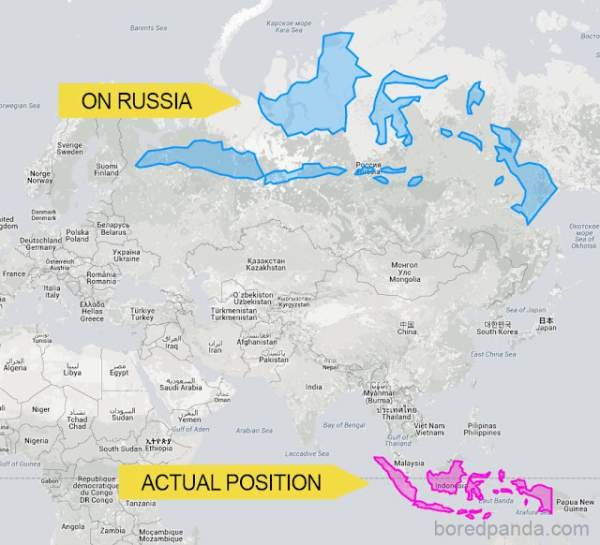
Indonesia is an archipelago that stretches across thousands of miles, but when moved across Russia, it spans nearly the entire width of the country, showing the length of this island chain.
7. Greenland vs. the U.S. and Brazil
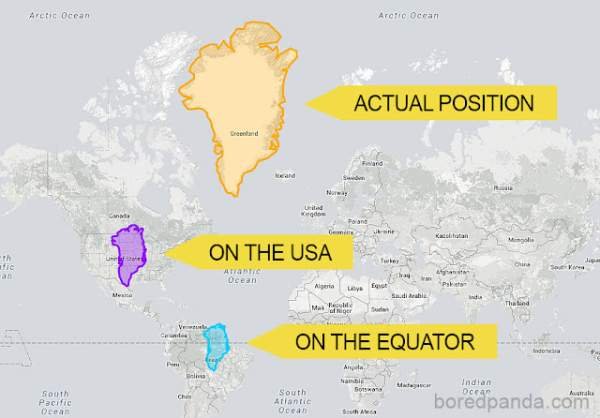
Greenland, which appears massive on many maps, is often mistaken as being much larger than it is. When placed next to the U.S. and Brazil, it becomes clear that Greenland is significantly smaller than both.
8. China on Russia
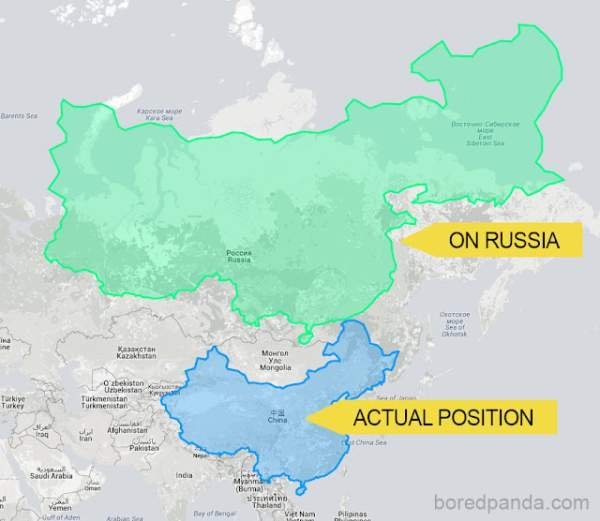
By placing China on top of Russia, the size of these two global giants becomes clearer. China, often viewed as enormous, covers only part of Russia’s vast northern expanse.
9. Canada in South America

When moved to South America, Canada doesn’t seem as imposing as it does on its northern territory. This shift highlights how much its size is exaggerated by being near the poles.
10. California vs. the U.K.
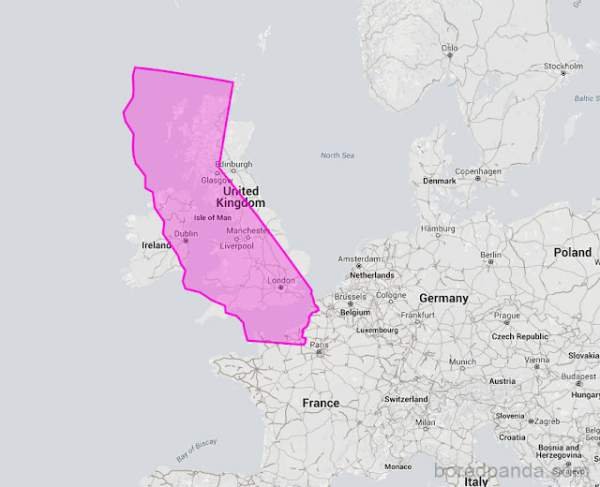
California, a single U.S. state, when moved to the U.K., reveals that they are quite similar in size. It’s surprising to realize how a state compares to an entire country in landmass.
11. Australia vs. North America
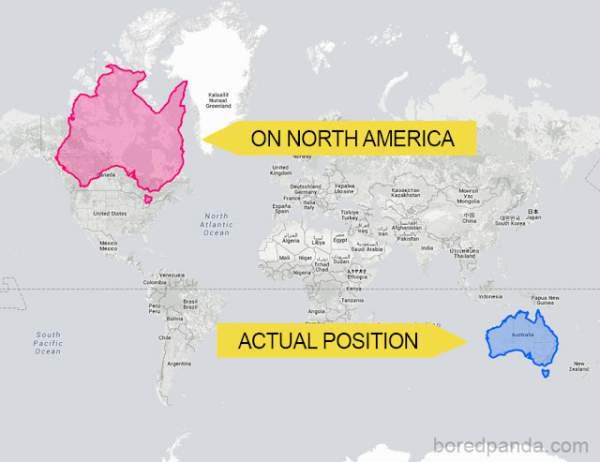
Moving Australia over North America shows just how vast the island continent really is, stretching across a large portion of the region.
12. Japan and Canada

Japan is often seen as a small island nation, but when stretched across Canada, it becomes clear that Japan spans a significant distance, nearly reaching from coast to coast.
13. Antarctica vs. Brazil
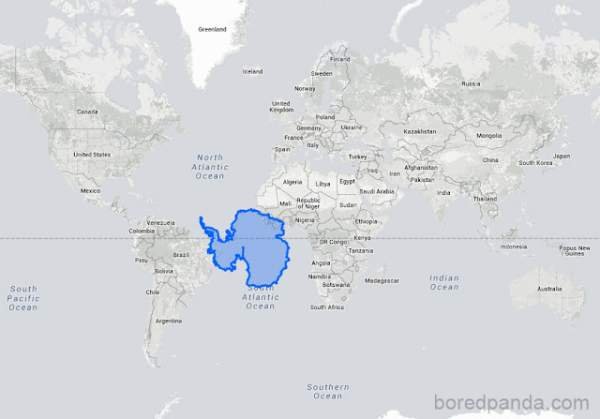
Antarctica, often depicted as a massive continent, shrinks dramatically when moved to the equator. When placed next to Brazil, it’s no longer the overwhelming giant that it appears on traditional maps.
14. India Moving North
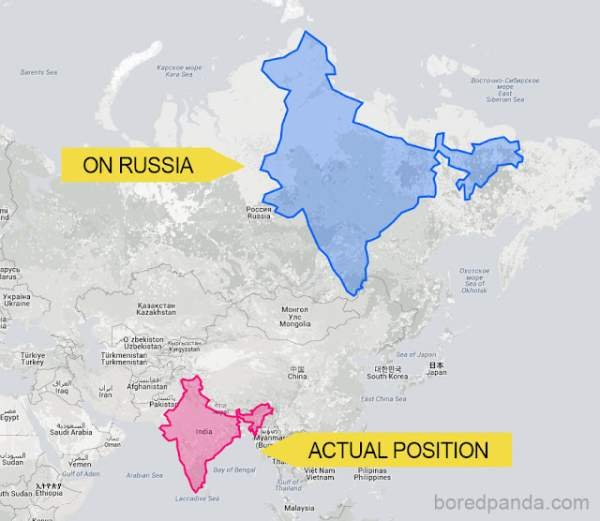
India is a large and populous country, but when moved northwards, it changes in appearance, becoming more compact and highlighting how latitude distorts its shape on a traditional map.
15. Canada vs. the U.S.

Canada and the U.S. are often seen as being vastly different in size, but when moved closer together, you’ll notice that they’re actually quite comparable in land area.
Changing the Way We View the World
These maps serve as a powerful reminder that the way we’ve traditionally looked at the world may not be entirely accurate. Thanks to the Mercator Projection, we’ve been conditioned to think of certain countries as much larger or smaller than they are. Tools like thetruesize.com help us correct these misperceptions, giving us a truer understanding of global geography.
Seeing countries moved around in this way offers a fresh perspective and might make you question everything you thought you knew about world maps! Whether you’re a geography enthusiast or just curious about how big (or small) the world’s countries really are, these comparisons will undoubtedly change how you view the globe




